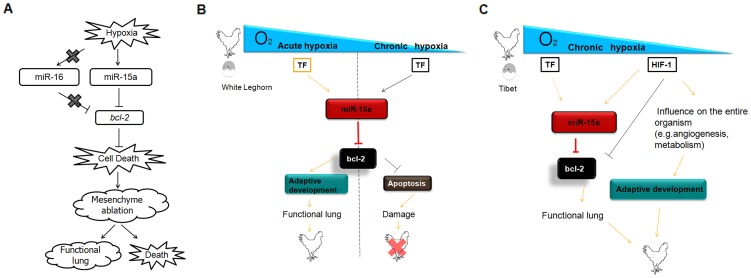Figure 6. Schematic representation of hypoxia-induced gga-miR-15a control of mesenchymal cell death/ablation during functional lung establishment and adaptive development.
(A) In chicken lung, hypoxia stress stimulates gga-miR-15a expression, and miR-15a may bind to the 3′-UTR of gga-bcl-2 and inhibit its antiapoptotic activity through posttranscriptional gene silencing. Mesenchymal apoptosis then occurs, which leads to a functional lung with a thinner BGB or an acute reaction resulting in death in different chicken species. gga-miR-16 shows no response to hypoxia, and there is no target site for gga-miR-16 in the 3′-UTR region of gga-bcl-2. (B) Mesenchymal cell death/ablation indeed appeared necessary for the formation of a thinner BGB and is promoted by hypoxia (the oxygen concentration). Particular transcriptional factors (TF) may respond to the hypoxia stress and induce gga-miR-15a expression. For plain chickens, the induced apoptosis would be helpful for the formation of a thinner BGB, but it could be lethal if they are exposed to low oxygen concentrations for a long time. (C) However, for high-altitude chickens, apoptosis is genetically initiated to form a functional BGB, and it is under control of the whole organism (C). Acute hypoxia: related hypoxia condition induced by the CCGS occursing around E19. Chronic hypoxia: long-term altitude condition with low oxygen concentration.

